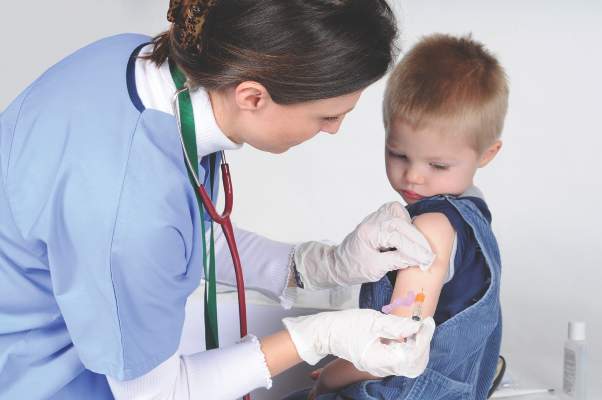FROM HEALTH AFFAIRS
Vaccination rates have been improving since the introduction of the federal Vaccines for Children program, new research in Health Affairs showed.
Since the start of the VFC program in 1995, racial and ethnic disparities also have narrowed, as have income-related disparities – although at different rates, based on analysis of data from the National Immunization Survey.
“These gains may well be attributed to the impact of the program in reducing financial barriers to access,” Brendan Walsh, Ph.D., research fellow at City University London, and his colleagues wrote, although they are calling for a deeper investigation because the pattern of uptake “varied within groups differentiated by race and ethnicity over time.” The data analysis appears in the February 2016 issue of Health Affairs (2016;35[2]:356-64. doi: 10.1377/hlthaff.2015.1019 ).
For example, vaccination rates for polio among white children aged 19-35 months grew from 91% in the 1995-1997 survey period to 93% in 2011-2013. For black children, the rate grew from 87% to 92%, and for Hispanics, the rate improved from 87% to 92%.
“The largest increase in overall vaccination rates over time was observed among low-income Hispanic children,” the researchers noted. “While these children consistently had the lowest vaccination rates of all groups at the beginning of the VFC program, this was not the case in the later periods.”
The data, however, also revealed a need for more nuanced research into racial, ethnic, and income disparities.
“As the VFC program developed, disparities between blacks and Hispanics relative to whites decreased,” Dr. Walsh and his associates said. “However, among blacks, income-related disparities increased, while those among Hispanics decreased.”
The report’s authors also observed that reductions in disparities did not occur evenly over time, which demonstrates a need to understand how factors other than financial barriers, such as disease outbreaks and increased public awareness, are influencing vaccination rates, which in turn will provide “a fuller understanding of the contribution of the VFC program to the increase in uptake and reductions in disparities.”
“One potential future avenue of research may be to study the perceived benefit of some vaccines, the perceived severity of illness that vaccines prevent, and to what extent these perceptions influence the decisions of parents and vaccination providers (that is, physicians) to request or suggest vaccination,” the researchers said.
Coauthor Ciaran O’Neill was supported by a Health Research Board (Ireland) Research Leaders Award 2013.



